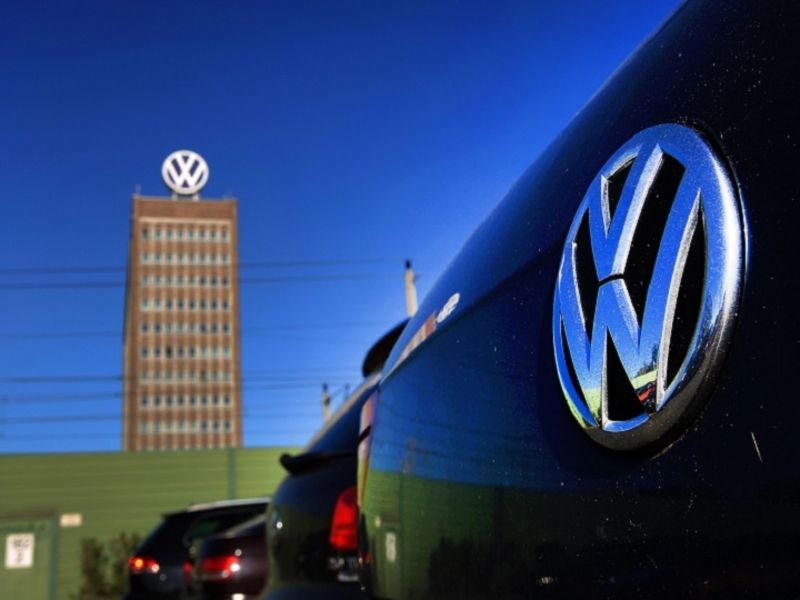
In its goal to eclipse Tesla as the world’s dominant electric vehicle manufacturer, Volkswagen appears to embrace “if you can’t beat them, join them.”
The German behemoth revealed plans last week to dramatically expand its EV operations both upstream and downstream, deciding to itself manufacture at least a sixth of its European battery cells sourced from six cell plants in the region as well as link with partners to operate a massive network of fast chargers across the continent.
Much like Tesla and its 4680 cylindrical cells, Volkswagen chose to concentrate on one “unified” cell to drive down the price of a kilowatt-hour to well below €100 ($119). By switching from the pouch format and focusing on prismatic, the plan does away with the need for modules, reducing costs.
Automakers had underestimated just how critical a role the battery played in differentiating EVs, say experts. BMW, for example, saw its core competence in building the electric motor, leaving the cells to suppliers.
“Most OEMs are starting to see the battery in the way that they saw engines — they want to maintain control of the most critical part of the powertrain,” said Al Bedwell, director of global powertrain forecasting at LMC Automotive.
“By taking control of its battery operations, VW and others think they can reach cost targets sooner than by depending on third parties and reduce risk of supply interruption in what is going to be a tight battery market for some years.”
With the latest move in a new strategy to go toe-to-toe with Tesla, VW proves imitation is the sincerest form of flattery. It comes on top of last year’s formation of a dedicated subsidiary tasked with delivering 60 percent of all software development for the group, an area in which Tesla excels. Currently, that rate is just 10 percent.
In a departure from past behavior, investors have since bid up the company’s stock, making it the most valuable German company in the blue-chip DAX index.
Typically financial markets have penalized automakers that had a high vertical integration, as suppliers could produce many components more affordably. Yet Tesla shares have soared despite, or perhaps because of, its end-to-end strategy that stretches from securing lithium deposits in Nevada all the way to controlling the distribution of its vehicles directly.
“Toyota essentially invented the industry system as it exists today. Now someone comes along and says the best approach is to go back to how things were in the 1960s,” said one equity analyst at a major U.S. investment bank, who is not authorized to speak with the press for compliance reasons. “Time will tell if greater manufacturing depth is the right solution.”
While Tesla’s enormous popularity among investors helps grease the wheels, VW’s move is in large part a reaction to the European Green Deal, a package of measures designed to get the European Union to net-zero carbon emissions by mid-century.
The European Commission is due to reveal by the end of June its plans for a revised 2030 fleet emission target that could see a reduction by half or more from the already-stringent 2021 levels of 95 grams of carbon dioxide per kilometer. For automakers, that timetable is just one model life cycle away.
Whether upstream or downstream, the shift toward greater vertical integration is here to stay, argues Peter Fuss, senior adviser for EY’s automotive team in Germany.
“Carmakers see what’s happening in [the EU] — one way or the other, they have to sell these cars, and they cannot wait until some municipality gets around to installing charging stations,” he said. “Nor can they afford to become dependent on suppliers for such a critical component of an EV. We’ve already seen what this can do for semiconductors and battery cells.”
To aid the industry and ensure access to the needed inputs, European policymakers have been aggressively supporting the local production of battery cells with a goal of achieving 30 percent of the world’s output. Volkswagen’s Swedish cell partner Northvolt was initially funded by the EU’s development bank before VW acquired a strategic stake.
Jeep and Ram parent Stellantis is likewise teaming up with a French battery company to eventually produce in Europe an annual supply of 48 gigawatt-hours of cells jointly.
Fuss says smaller carmakers will eventually follow, as outsourcing this entirely is a losing proposition.
Volkswagen’s decision put BMW on the spot last week. Executives fielded questions from reporters on whether they would follow with their own cell production and potentially — mimicking Porsche — a network of charging station parks with exclusive lounges.
BMW CEO Oliver Zipse’s management team didn’t see sense in following VW’s lead, arguing it was “clearly wrong” at this stage to invest in its own industrial scale cell production. But the executives did voice concerns about infrastructure.
“The expansion in the charging network in Germany, and even more so in Europe overall, is too slow. At the moment, demand for battery-electric vehicles is growing four times as fast,” Zipse said. “But it doesn’t make a lot of sense to invest in charging infrastructure that is only accessible by BMW clients.”
VW’s decision is also a coup for the German carmaker’s influential domestic unions, which have pushed for in-house cell production since the very beginning, even helping remove Matthias Müller as CEO in April 2018 because of his opposition to greater vertical integration.
Labor leader Bernd Osterloh triumphantly took to LinkedIn to celebrate, posting his newsletter to staff that the plan would secure thousands of jobs over the long term and represented nearly twice the scale previously foreseen.
Osterloh, a nonexecutive director on VW’s board, wasn’t finished with his campaigning, either: “Another gigafactory in Germany needs to be built.”